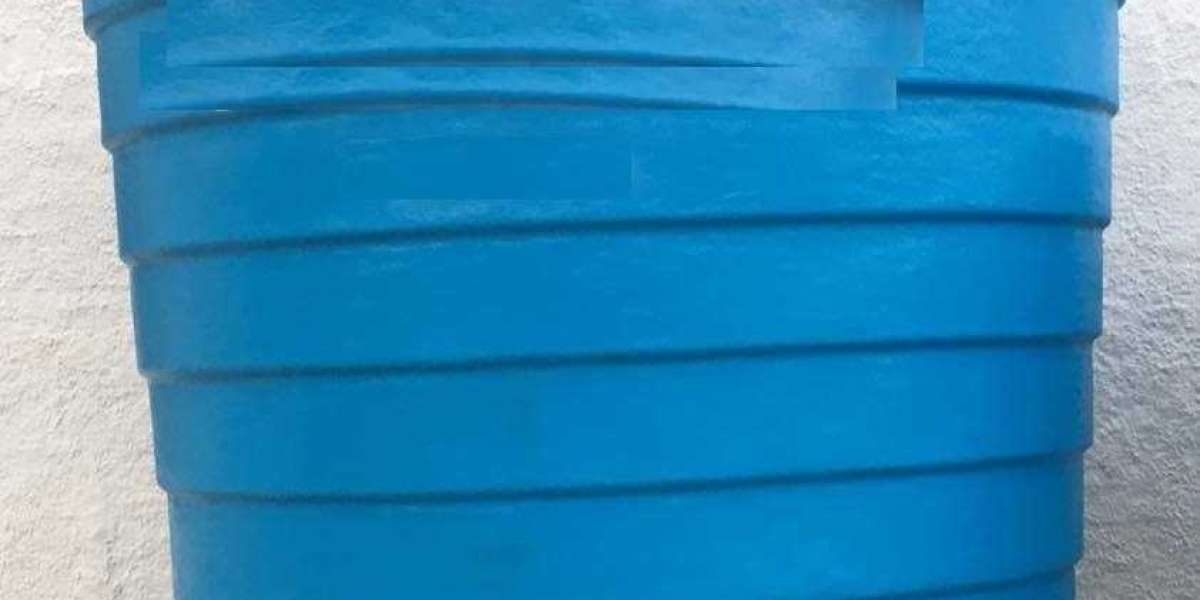Air ventilation is critical for ensuring a healthy and comfortable living environment. By enabling the exchange of indoor and outdoor air, it helps regulate temperature, remove pollutants, and control moisture levels. Effective ventilation can prevent the build-up of harmful substances like carbon dioxide, volatile organic compounds, and other airborne contaminants. It also plays a vital role in reducing the presence of allergens, such as dust mites and mould spores, which can aggravate respiratory conditions. Whether through natural, mechanical, or hybrid systems, proper Air Ventilation ensures that stale air is replaced with fresh air, enhancing overall indoor air quality. With advancements in technology, modern ventilation systems offer improved efficiency and can be tailored to meet specific needs, making it easier to maintain a healthier home environment.
Different Types of Ventilation System
Ventilation systems can be broadly categorised into three types: natural, mechanical, and hybrid solutions. Natural ventilation relies on passive methods such as windows, vents, and architectural design to facilitate airflow. This type of system is cost-effective and eco-friendly but may not always provide adequate ventilation, especially in tightly sealed buildings.
Mechanical ventilation uses fans and duct systems to control airflow and can include exhaust, supply, balanced, and energy recovery systems. These systems offer precise control over air quality and are ideal for environments where natural ventilation is insufficient. Hybrid ventilation combines natural and mechanical methods to optimise efficiency and flexibility, often using mechanical systems to supplement natural airflow when needed. This approach balances energy efficiency and air quality, adapting to changing conditions to provide optimal ventilation.
The Importance of Proper Airflow
Proper airflow ensures a pleasant indoor environment and prevents potential health risks. Inadequate ventilation can accumulate pollutants, moisture, and stale air, which may lead to respiratory issues and structural problems like mould growth. Strategically placing vents, fans, and air inlets can help maintain a balanced fresh air flow throughout the home.
Maintaining the correct balance between air intake and exhaust is also crucial, as it ensures that contaminants are effectively removed while fresh air is continually introduced. Regular checks and maintenance of these components can aid in achieving optimal airflow and enhancing the efficiency of your ventilation system. A well-designed system can also help manage humidity levels, further contributing to a comfortable living space.
Considerations for Choosing the Right Ventilation System
When choosing a Ventilation System, consider several key factors. Evaluate the size and layout of your home, as this will influence the type and capacity of the system required. The local climate is also crucial; regions with high humidity may need more robust systems to manage moisture levels effectively. Assess specific air quality needs, such as allergens or pollutants, which may necessitate advanced filtration.
Cost is another critical factor; while high-efficiency systems might be more expensive initially, they often offer significant long-term savings. Energy efficiency and environmental impact should also be weighed, as sustainable systems can reduce your carbon footprint. Additionally, ease of maintenance and compatibility with existing infrastructure should be considered. Consulting with professionals can provide tailored recommendations based on a detailed assessment of your home and requirements.
Installing a Ventilation System: Step-by-step Guide
Assess ventilation needs:
Evaluate your home's current ventilation, pinpointing areas needing improvement.
Select suitable equipment:
Based on your specific requirements, choose appropriate fans, ducts, and filtration systems.
Plan the layout:
Determine optimal placement for components to maximise airflow.
Follow the installation process:
- Install air inlets and outlets in strategic locations.
- Set up ductwork, ensuring all connections are secure and properly sealed.
- Install fans, ensuring they are adequately powered and integrated with controls.
- Incorporate filtration systems within the ductwork.
- Test the system to ensure correct functionality and make adjustments if necessary.
Regularly maintain the system by checking and cleaning components and replacing filters as required.
Maintenance Tips for Efficient Ventilation Systems
Regular maintenance is essential to ensure your ventilation system performs efficiently. Conduct routine inspections, focusing on components such as fans, ducts, and vents. Clean these parts to prevent dust and debris build-up, hindering airflow and reducing efficiency. Replace filters as the manufacturer recommends to maintain optimal air quality and system performance. Check for any signs of wear and tear or damage, particularly in ductwork and mechanical parts, and address these issues promptly.
Lubricate moving parts to minimise friction and extend the system's lifespan. Ensure that all connections are secure and properly sealed to prevent air leaks, which can lead to energy loss. Regularly calibrate and test control systems and sensors to ensure they function correctly. Employ a professional service for an annual inspection to identify potential issues that may not be apparent during routine checks.
Importance of Regular Air Quality Testing
Regular air quality testing provides valuable insights into the presence of pollutants and the overall effectiveness of your ventilation system. You can measure carbon dioxide levels, volatile organic compounds, and other contaminants using air quality monitors. This data enables you to make informed decisions about necessary adjustments or improvements to your ventilation setup.
Regular testing is especially crucial in homes with occupants who have respiratory conditions or allergies, as it helps maintain a safe and comfortable environment. Identifying issues early can proactively enhance air quality, promoting better health and well-being. For a thorough analysis, professional assessments can offer detailed insights and recommendations tailored to your specific needs.
Key Components of Air Ventilation System for Home
A comprehensive Air Ventilation System for Home consists of several vital elements working together. Air inlets allow fresh air to enter, while outlets facilitate the removal of stale air. Fans are critical in moving air through the system, ensuring consistent circulation. Ductwork connects the various components and channels air to different parts of the home. Filtration systems are essential for trapping dust, allergens, and other pollutants, enhancing indoor air quality.
Additionally, controls and sensors can be integrated to manage the system's operation, ensuring it responds to changing conditions and maintains optimal performance. Proper ductwork insulation is also crucial to prevent energy loss and maintain efficiency. Regular maintenance of these components is necessary to keep the system functioning effectively and to avoid potential issues.
Energy Efficiency in Air Ventilation
Improving the energy efficiency of your ventilation system can significantly reduce energy consumption. Incorporate technologies such as energy recovery ventilators, which capture and reuse energy from exhaust air. Additionally, ensure your system is well-insulated and consider using energy-efficient fans to minimise waste. Upgrading to smart controls can optimise the operation of your ventilation system, adjusting airflow based on real-time needs and reducing unnecessary usage.
Sealing leaks in ductwork prevents air loss, enhancing overall system efficiency. Programmable thermostats can further fine-tune ventilation settings to coincide with occupancy patterns, ensuring the system works only when needed. Regular maintenance, including cleaning and timely filter replacements, keeps components running smoothly and avoids energy waste due to clogged or malfunctioning parts. Opting for high-efficiency filters also ensures the system operates effectively without excessive energy use. Implementing these measures can provide a more sustainable and cost-effective home ventilation solution.
The Impact of Climate on Air Ventilation Requirements
Climate significantly influences ventilation needs by dictating the primary challenges that systems must address. In hot and humid climates, ventilation systems must remove heat and moisture to maintain indoor comfort efficiently. Utilising systems with dehumidification capabilities can be beneficial in such regions.
Conversely, in colder climates, the focus shifts to minimising heat loss while ensuring adequate air exchange. Insulating ductwork and using heat recovery ventilators can help retain warmth. Seasonal variations also require adaptable systems that adjust to changing conditions, ensuring optimal yearly performance.
Additionally, regions prone to extreme weather conditions may require more robust and resilient systems to withstand and operate efficiently under such stressors. Adapting your ventilation system to local climate conditions is essential for maintaining a comfortable and energy-efficient home environment.
Common Problems in Ventilation Systems and Solutions
Common issues with ventilation systems include blockages, leaks, and malfunctioning components. Blockages can result from dust, debris, or pest intrusion in the ductwork and vents. Cleaning these areas regularly can prevent airflow restrictions and maintain efficiency. Leaks in ductwork or around seals can lead to energy loss and reduced system performance; sealing these gaps promptly can mitigate such issues.
Mechanical parts like fans and motors may wear out or fail, necessitating timely repairs or replacements to ensure continuous operation. Inconsistent airflow or uneven temperature distribution often indicates ductwork problems or incorrect system balancing, which can be resolved by inspecting and adjusting the affected areas. Employing a professional service for regular inspections can help identify and address these problems before they escalate.
The Role of Air Ventilation in Building Regulations
Building regulations play a significant role in shaping the design and implementation of air ventilation systems. These regulations are established to ensure that ventilation systems provide adequate airflow, maintain indoor air quality, and operate efficiently. Compliance with these standards is essential for proper ventilation, preventing health hazards such as mould growth, indoor air pollution, and inadequate oxygen levels.
Local codes often specify the minimum ventilation rates, which dictate how much fresh air must be supplied to various spaces within a building. Additionally, regulations may require specific materials and methods to ensure the system's safety and durability. For instance, fire-resistant ductwork and proper insulation are commonly mandated to reduce fire risk and energy loss.
Another critical aspect covered by building regulations is integrating mechanical and natural ventilation methods. Guidelines often encourage using energy-efficient technologies and sustainable practices to minimise environmental impact while maintaining comfort and air quality.
Ensuring your ventilation system meets these regulatory requirements often involves professional consultation and thorough planning. This guarantees compliance and optimises the system's performance, contributing to a healthier and more sustainable living environment.
Conclusion
Adequate air ventilation significantly enhances indoor air quality and overall comfort. Properly chosen and maintained systems prevent the accumulation of harmful substances, such as carbon dioxide and allergens, ensuring a healthier living space. Understanding the various types of ventilation systems—natural, mechanical, and hybrid—allows homeowners to make informed decisions based on their needs and local climate conditions. Routine maintenance, including regular cleaning, timely filter replacements, and inspections, is crucial for optimal performance and energy efficiency. Additionally, considering factors such as home layout, specific air quality needs, and energy efficiency when selecting a system can lead to better long-term results. Addressing these aspects can create a more sustainable and comfortable home environment free from common ventilation issues.
FAQS
1. What is the primary purpose of air ventilation?
The main goal of air ventilation is to maintain indoor air quality by ensuring a continuous exchange of indoor and outdoor air, which helps regulate temperature and remove pollutants.
2. How often should ventilation systems be maintained?
Ventilation systems should undergo routine inspections every few months. This includes cleaning components, checking for wear and tear, and replacing filters to keep the system operating efficiently.
3. Can natural ventilation be sufficient for all homes?
While natural ventilation is often adequate, it may not always be sufficient, particularly in tightly sealed buildings or areas with specific air quality concerns. In such scenarios, mechanical or hybrid systems might be required to ensure adequate airflow.
Related Business Listings |







